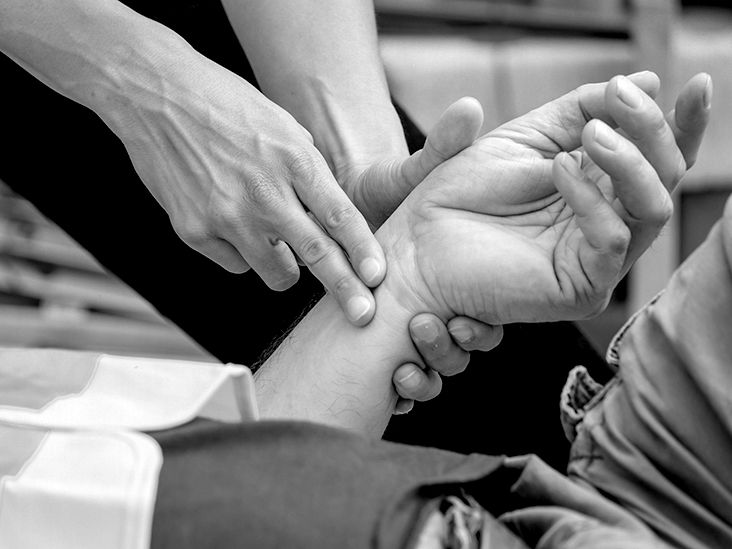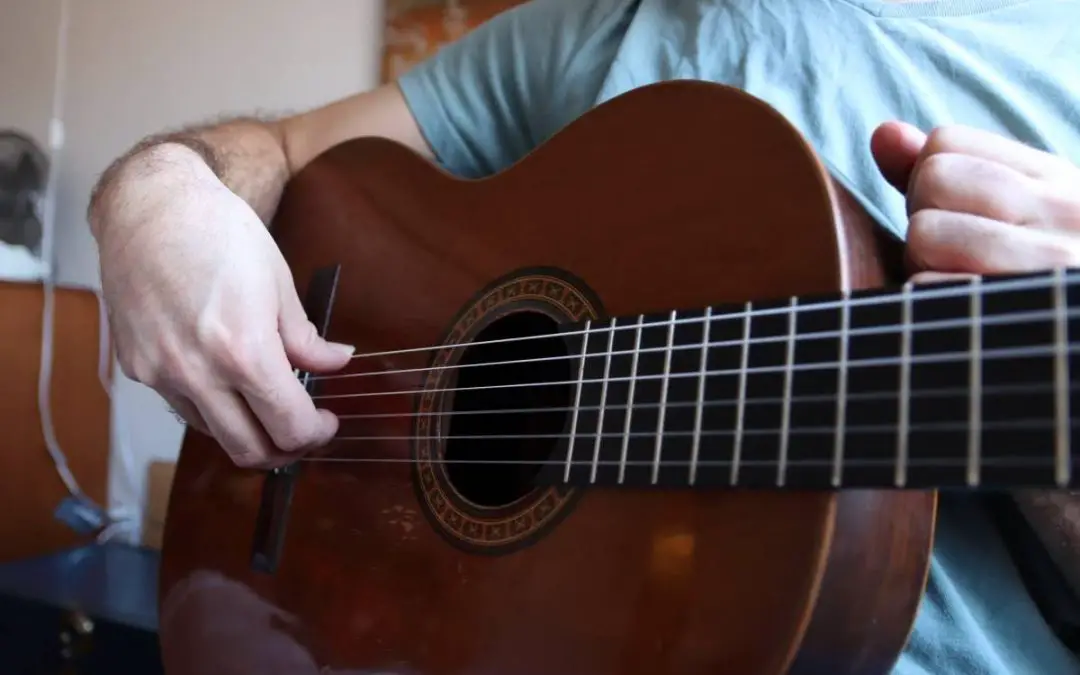Are you tired of fumbling around with your fingers while trying to master the art of fingerpicking? Well, fear not, fellow musicians, for we have the ultimate guide to help you become a fingerpicking master, no matter what skill level you’re starting from. From absolute beginners to seasoned pros, this guide has got you covered with all the tips, tricks, and techniques you need to pluck your way to fingerpicking perfection. So grab your guitar, banjo, or ukelele, and get ready to unleash your inner fingerpicking genius!
Contents
- 1 Understanding the Basics of Fingerpicking Technique
- 2 Exploring Various Fingerpicking Patterns and Their Applications
- 3 Incorporating Fingerpicking into Different Musical Genres
- 4 Advanced Techniques: Enhancing Speed, Accuracy, and Tone
- 5 Troubleshooting Common Fingerpicking Challenges
- 6 Expanding Your Musical Expression Through Fingerpicking Dynamics
- 7 Resources and Practice Strategies for Continuous Improvement
- 8 FAQs
- 9 So, there you have it – the Fingerpicking Master Class has come to an end!
Understanding the Basics of Fingerpicking Technique
So you want to become a fingerpicking master, huh? Well, you’ve come to the right place! Let’s break down the basics of this intricate technique so you can start plucking away like a pro.
First things first, make sure your nails are nice and trimmed. You don’t want to be accidentally shredding those strings with your talons, do you? Keep those nails short and sweet for optimal fingerpicking performance.
Next, let’s talk hand positioning. Your picking hand should be relaxed and slightly arched over the strings, almost like you’re reaching for that last slice of pizza. Your fretting hand should be ready to make some sweet, sweet music. Keep those fingers limber and loose!
Now, onto the actual technique. Start by plucking individual strings with your thumb and fingers, alternating between them to create a rhythmic pattern. Experiment with different finger combinations until you find what works best for you. Remember, practice makes perfect!
Exploring Various Fingerpicking Patterns and Their Applications
So you’re ready to level up your fingerpicking game, huh? Well, you’ve come to the right place! Below, we’ll dive into some of the most popular fingerpicking patterns and how you can use them to impress your friends, serenade your crush, or just annoy your neighbors.
First up, we have the Travis Picking pattern. Named after the legendary country guitarist Merle Travis, this pattern involves alternating the bass notes with your thumb while picking out the melody with your fingers. It may sound complicated, but with a little practice, you’ll be thumb-picking like a pro in no time.
Next, let’s talk about The Claw. No, we’re not discussing some bizarre hand mutation. “The Claw” is a fingerpicking pattern popularized by acoustic guitar virtuosos like Tommy Emmanuel. This pattern involves using your thumb, index, middle, and ring fingers to pluck the strings simultaneously, creating a full and lush sound that will make your listeners think there are two guitarists playing.
And finally, we have The Flamenco Rasgueado. This pattern is not for the faint of heart. Originating from the fiery world of Flamenco guitar, this technique involves rapidly strumming the strings with all five fingers of your picking hand, creating a percussive and energetic sound that will have your audience on the edge of their seats. Just make sure you don’t accidentally set your guitar on fire with all that finger fury!

Incorporating Fingerpicking into Different Musical Genres
So, you’ve mastered the art of fingerpicking and now you’re ready to take your skills to the next level by incorporating it into different musical genres. Whether you’re strumming along to some folk tunes or jamming out to some bluesy riffs, fingerpicking can add a whole new dimension to your music.
One way to spice up your fingerpicking game is to experiment with different genres. Here are some tips to help you incorporate fingerpicking into various musical styles:
- Country: Embrace your inner cowboy and channel your inner Willie Nelson with some twangy fingerpicking patterns.
- Blues: Get down and dirty with some gritty blues riffs that will make your fingers fly across the strings.
- Rock: Bring some edge to your fingerpicking with fast-paced riffs that will have the crowd headbanging along.
Remember, the key to incorporating fingerpicking into different genres is to experiment and not be afraid to make mistakes. After all, even the greatest musicians started out as beginners. So grab your guitar, unleash your creativity, and let your fingers do the talking!

Advanced Techniques: Enhancing Speed, Accuracy, and Tone
So you’ve mastered the basics of playing the guitar, but now it’s time to take things to the next level and really wow your audience. Here are some advanced techniques to help you enhance your speed, accuracy, and tone:
Speed:
- Practice your scales with a metronome to improve your timing and build up your speed.
- Experiment with alternate picking and sweep picking to play faster licks and solos.
- Try using hammer-ons and pull-offs to keep your fingers moving smoothly across the fretboard.
Accuracy:
- Focus on playing each note cleanly and crisply, and pay attention to your hand positioning.
- Work on your fretting hand technique to ensure you’re pressing down on the strings in the right places.
- Practice playing arpeggios to improve your fingerpicking accuracy and control.
Tone:
- Experiment with different guitar effects pedals to find the perfect tone for your playing style.
- Adjust your amp settings to dial in the right amount of distortion, reverb, and other effects.
- Practice using dynamics in your playing to add depth and emotion to your performances.

Troubleshooting Common Fingerpicking Challenges
So you’ve decided to tackle the world of fingerpicking on the guitar, huh? Well, get ready for a wild ride! While fingerpicking can be a beautiful and rewarding way to play, it also comes with its fair share of challenges. But fear not, brave soul, for I am here to guide you through some of the most common fingerpicking struggles and how to overcome them.
First up, let’s talk about those pesky string buzzes. If you find that your fingerpicking is producing more of a buzzing sound than the sweet melodies you were aiming for, it’s likely due to your fingers not landing squarely on the strings. Make sure to position your fingers directly over the strings you want to pluck, with your fingertips making clean contact. If you still can’t seem to shake the buzz, try adjusting your hand position or the angle of your fingers until you find that sweet spot.
Another common issue for fingerpickers is uneven playing. You know what I’m talking about – one finger is going a mile a minute while the others struggle to keep up. To combat this, try practicing each finger individually to build up their strength and dexterity. Remember, all fingers are created equal in the world of fingerpicking, so give each one some love and attention.
Lastly, let’s address the issue of speed. We all want to be the next fingerpicking virtuoso, but it takes time and patience to build up your speed. Don’t get discouraged if you can’t play as fast as you’d like right out of the gate. Start slow and gradually increase your speed as you become more comfortable with the patterns and movements. Before you know it, you’ll be fingerpicking with the best of them!
Expanding Your Musical Expression Through Fingerpicking Dynamics
So you’ve mastered the basics of fingerpicking and now you’re ready to take your musical expression to the next level. Well, buckle up because we’re about to dive into the world of fingerpicking dynamics!
Dynamic playing is all about adding depth and emotion to your music. By incorporating dynamic contrast into your fingerpicking technique, you can create a musical experience that is truly captivating. Here are some tips to help you expand your musical expression through fingerpicking dynamics:
- Vary your picking intensity: Experiment with picking the strings at different levels of intensity. Play some notes softly and others more aggressively to create a dynamic range of sound.
- Focus on your finger pressure: Adjust the pressure of your fingers on the strings to control the volume and tone of each note. Light pressure can produce a delicate sound, while heavy pressure can create a bold and powerful sound.
- Explore different fingerpicking patterns: Don’t be afraid to mix things up and try out new fingerpicking patterns. Changing up your patterns can add a fresh and exciting dynamic to your music.
Remember, the key to mastering fingerpicking dynamics is practice, practice, practice! So grab your guitar, experiment with different techniques, and let your creativity run wild. Before you know it, you’ll be wowing audiences with your newfound musical expression!
Resources and Practice Strategies for Continuous Improvement
So, you’ve decided to embark on the never-ending journey of continuous improvement – brave soul! Here are some resources and practice strategies that will help you along the way:
First off, Google is your best friend! There are countless articles, blogs, and forums on the internet that are dedicated to the topic of continuous improvement. It’s like a treasure trove of knowledge just waiting to be explored. Dive in and let the wisdom of the internet guide you to greatness.
Next, don’t forget about good old books and podcasts. There are plenty of authors and speakers out there who have dedicated their lives to the pursuit of continuous improvement. So, plug in those headphones and start absorbing all that juicy knowledge. Who knows, maybe you’ll even find a podcast hosted by a talking parrot that has some really deep insights on the subject.
And let’s not overlook the power of peer-to-peer learning. Get together with your team or find a group of like-minded individuals who are also on the continuous improvement bandwagon. Share your successes and failures, bounce ideas off each other, and most importantly, laugh together at the absurdity of it all. Because let’s face it, continuous improvement can be a wild and crazy ride, but it’s a hell of a lot more fun when you have some buddies along for the journey!
FAQs
Can I master fingerpicking even if I have no prior experience with playing an instrument?
Yes, absolutely! All it takes is some patience, dedication, and a sense of humor for when your fingers just won’t cooperate.
What are some tips for improving fingerpicking speed?
Ah, the need for speed! Practice, practice, practice. Start slow and gradually increase your pace. It’s like training for a fingerpicking marathon.
How can I prevent my fingers from cramping during long practice sessions?
Stretch those digits! Take frequent breaks to give your fingers a little massage and some TLC. You can even pretend they’re tiny little athletes in need of a cool down.
Is it normal to feel frustrated when learning fingerpicking techniques?
Oh, absolutely! It’s all part of the journey. Embrace the frustration, conquer it, and soon you’ll be fingerpicking like a boss.
Can fingerpicking help improve my overall guitar playing skills?
Definitely! Fingerpicking can enhance your dexterity, rhythm, and coordination. It’s like a multitasking workout for your fingers.
So, there you have it – the Fingerpicking Master Class has come to an end!
But fear not, dear readers, for your fingerpicking journey is just beginning. Armed with the knowledge gained from this guide, you are now equipped to take on any fingerpicking challenge that comes your way. Whether you’re a beginner just starting out or a seasoned pro looking to up your game, remember to practice, experiment, and most importantly, have fun with it!
Now go forth, brave fingerpickers, and let the strings sing under your nimble digits. May your melodies be sweet, your rhythms be tight, and your calluses be strong. And who knows - with a little bit of practice and a whole lot of determination, you might just reach fingerpicking nirvana.
Happy picking, friends - until next time!



